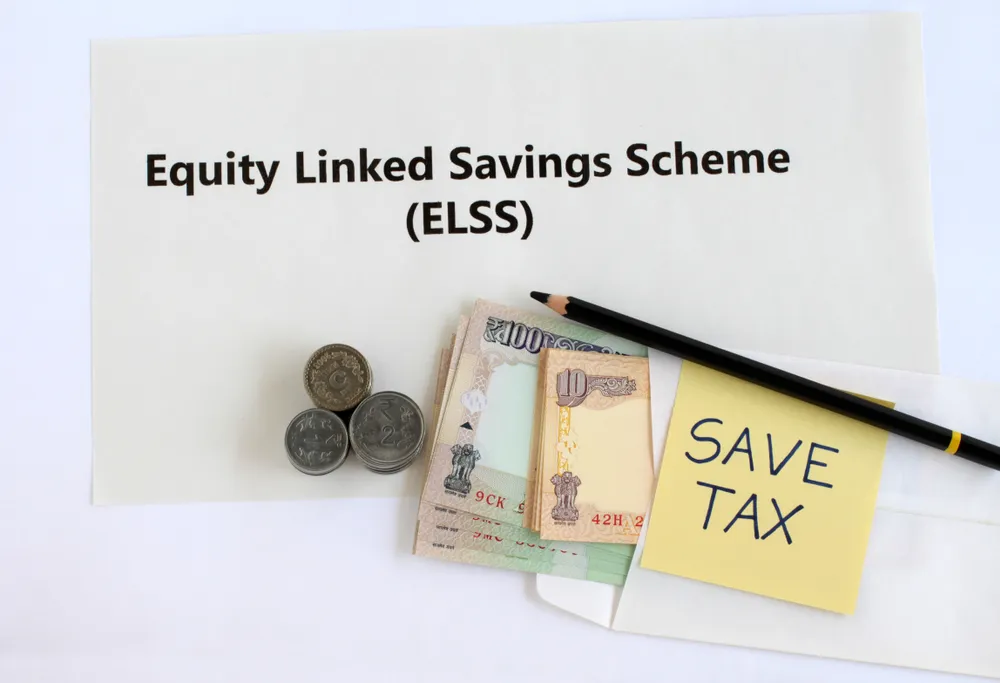Personal Finance News
Tax-saving for FY 2024-25: Should you invest in ELSS amid the market correction?

4 min read | Updated on January 15, 2025, 11:39 IST
SUMMARY
The BSE Sensex corrected by nearly 7%, while the NIFTY50 dropped by approximately 6.8% between December 13, 2024, and January 13, 2025. Taxpayers opting for the old tax regime for FY 2024-25 may make the most of the recent corrections in equity markets by investing in equity-linked savings schemes.

The last date to make tax-saving investments for FY 2024-25 is March 31, 2025. Representational image
If you haven't made your tax-saving investments under section 80C for the financial year 2024-25, the recent market correction might be a good opportunity to invest in ELSS funds.
In the one-month period between December 13, 2024, and January 13, 2025, the BSE Sensex corrected by nearly 7%, while the NIFTY50 dropped by approximately 6.8%. Taxpayers opting for the old tax regime can make the most of the recent corrections in equity markets by investing in the Equity-Linked Savings Scheme (ELSS) offered by mutual fund asset management companies (AMCs). Here are the top reasons why:
Funds available at lower NAV
ELSS funds mostly invest in large-cap funds. With the recent sharp corrections in large-cap indices, the respective Net Asset Values (NAV) of ELSS funds have decreased.
The following table shows how the NAVs of 10 ELSS funds having NAV of over ₹8000 crore declined from December 13, 2024, to January 13, 2025.
| Scheme Name | AUM (cr) | Return in 3 years (%) | % change in NAV |
|---|---|---|---|
| Aditya Birla Sun Life ELSS Tax Saver Fund | 14,6267 | 9.13 | -7.29% |
| Axis ELSS Tax Saver Fund | 33,991 | 6.26 | -7.67% |
| Canara Robeco ELSS Tax Saver | 8,314 | 11.68 | -8.03% |
| DSP ELSS Tax Saver Fund | 15,805 | 16.33 | -7.58% |
| HDFC ELSS Tax Saver Fund | 15,284 | 19.54 | -5.91% |
| ICICI Prudential ELSS Tax Saver | 13,319 | 11.62 | -6.59% |
| Mirae Asset ELSS Tax Saver Fund | 23,745 | 12.13 | -8.20% |
| Nippon India ELSS Tax Saver Fund | 14,286 | 14.1 | -0.70% |
| Quant ELSS Tax Saver Fund | 10,261 | 14.54 | -7.68% |
| SBI Long Term Equity Fund | 26,838 | 21.64 | -6.61% |
Source: AMFI, data accessed on January 15, 2025; Upstox research
Shortest lock-in
Among all tax-saving investment options, ELSS funds have the shortest lock-in period of just three years.
Regulated by SEBI
As these funds are regulated by the Securities and Exchange Board of India (SEBI), they offer better transparency and flexibility to investors. Moreover, these days investors also have the option to invest in passive ELSS funds, apart from the active ones, that come with very low administrative charges.
Tax benefit on investment and redemption
By investing in ELSS funds, you can not only claim a deduction under section 80C for the invested amount but also get some tax relief at the time of redemption.
Additionally, long-term capital gains over ₹1.25 lakh will be taxed at 12.5%, which is much lower than the slab-based taxation of tax-saver fixed deposits. Short-term capital gains do not apply to ELSS funds due to the 3-year lock-in rule.
Points to note before investing
While ELSS funds have several features that make them the preferred choice for tax-saving, please note that this benefit is not allowed under the new tax regime.
Moreover, you need to be cautious while selecting an ELSS fund as not all of them come with the same amount of risk. There are a few ELSS schemes that have been investing higher amounts in mid-cap and small-cap stocks, which are riskier than larger caps. That said, most ELSS schemes invest a majority of their corpus in large-cap stocks.
Additionally, stock markets are expected to remain volatile in the short term. Therefore, investors should consult with a SEBI-approved financial advisor to find the right ELSS fund. Also, if your risk appetite is low, you may explore investing in safer tax-saving options like the Public Provident Fund (PPF) or tax-saving fixed deposits.
Remember, the last date to make tax-saving investments for FY 2024-25 is March 31, 2025. So investors should plan their investments accordingly.
By signing up you agree to Upstox’s Terms & Conditions
About The Author
Next Story

